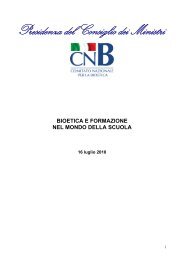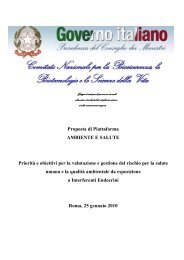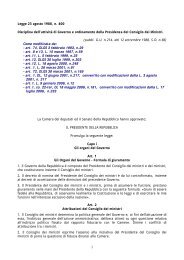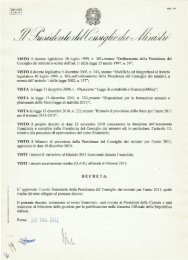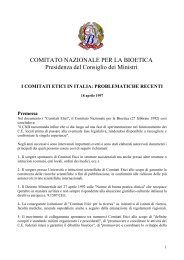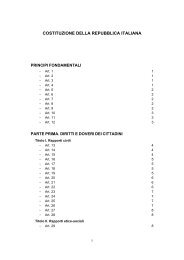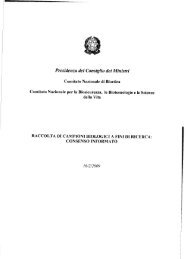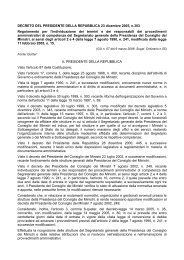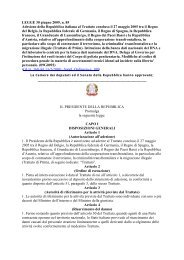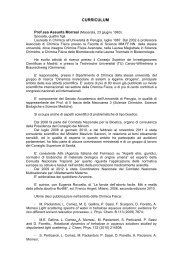President
President
President
Create successful ePaper yourself
Turn your PDF publications into a flip-book with our unique Google optimized e-Paper software.
the mother as a protagonist in the making of the new living being and of the<br />
relationship as an element that links biology and biography, make this passage<br />
a key anthropological threshold also from a theological point of view.<br />
In conclusion, this connection of perspectives opens the way to the<br />
possibility of using the embryos, formed but not yet implanted, for scientific<br />
research purposes, but it does not intend to be an indiscriminate consent: if<br />
human life – because this is what we are talking about – must not become<br />
sacred, it also cannot be used at a whim, in the interest of scientific or<br />
economical powers.<br />
II. Specific observations.<br />
The general observations presented above are the background to some<br />
specific observations on particular points based on two orders of arguments.<br />
The first refers to the evaluation of scientific research and of the reasons<br />
presented in defence of its practicability and concludes with the statement that<br />
“the studies on cytoplasmic hybrids at the moment are hardly justified”. But the<br />
mere fact that the scientific proposition is, at the moment, scarcely justifiable<br />
from the point of view of previous scientific evidence, does not imply its<br />
immorality, but, at most, its uselessness. The connection between scientific<br />
justification and morality of research is important in pharmacological and clinical<br />
trials on human beings (who would be subjected to a useless risk if the protocol<br />
was hardly scientific) and not in base research. We also want to stress that, in<br />
the case of the experiment in question, rather than talking about scarce<br />
scientific justification (in the previous bioethical evaluation at the end of<br />
paragraph 2, the protocol followed in creating hybrids is described as<br />
“sufficiently standardised”), we should talk about scarce evidence with regards<br />
to the possibility that this experiment will reach its objectives: but the mere<br />
circumstance that, in effect, an innovative proposition cannot demonstrate any<br />
scientific evidence that is already established, cannot be a reason to condemn<br />
such proposition. From the point of view of the internal criteria governing<br />
scientific research, it would be a contradiction to state that a proposition that is<br />
not yet referenced by evidence must not, only for this reason, be pursued: this<br />
would be the same as saying that no innovative research can ever be<br />
undertaken. In 1980 the Nobel Prize Mario Capecchi was refused funding for<br />
his research on homologous recombination by the NIH, as they were<br />
considered “unworthy of being pursued”. Capecchi did now allow this to<br />
discourage him and, some years later, granting him the funding, the NIH stated:<br />
“We are happy that you did not pay attention to our assessment” 71 .<br />
To these evaluations about the scientific value of the research in previous<br />
bioethical assessments, we add a critique of the reasons given by researchers<br />
in defence of its practicability. In reality, these are ideas taken from the<br />
consultation promoted by the HFEA – that cannot directly be attributed to the<br />
researchers in question – in the course of which some have voiced the fear<br />
(see letter a) that, once this practice is made legitimate, we could give into the<br />
temptation of aiming to “liberalise other forms of interspecies fertilisation” and to<br />
“transfer such hybrid cellular populations into the human or into the animal<br />
body”: aims that in addition, if realised, would be a crime according to the<br />
current English legislation, as already recalled.<br />
71 S. Simple, “Scientist Profile: Mario Capecchi, Ph.D.”, Genetic Science Learning Center,<br />
University of Utah: www.gslc.genetics.utah.edu/features/capecchi/.<br />
36




